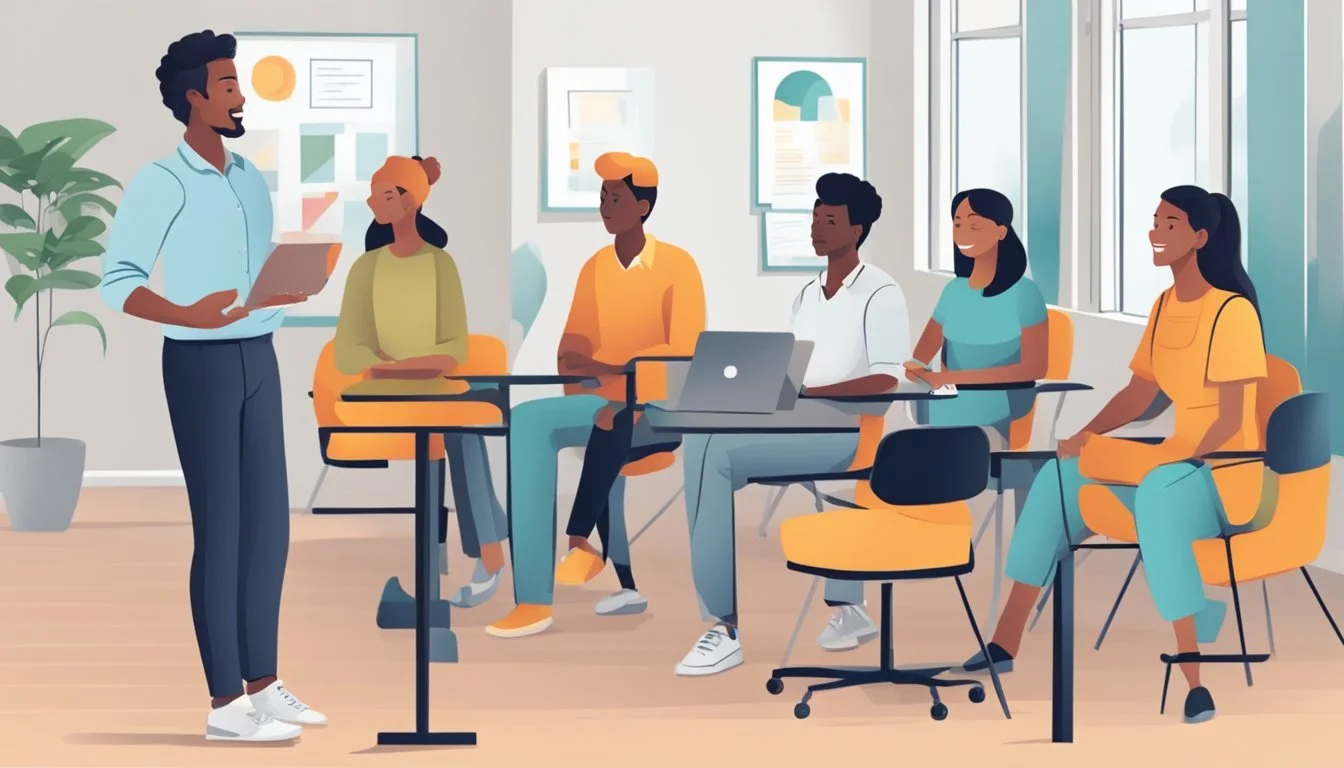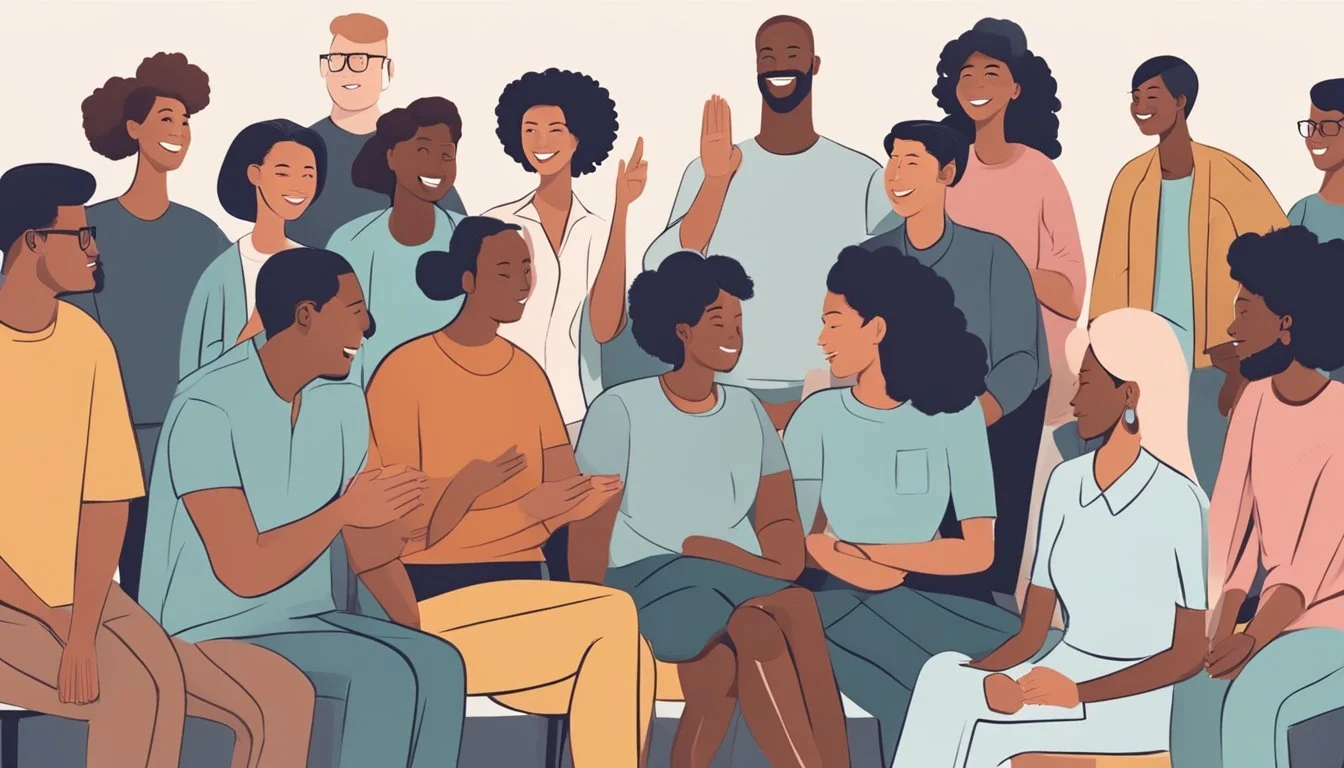11 Signs You Have a Flexible Communication Style
Mastering Effective Interaction
Effective communication in the workplace is essential for fostering collaboration and understanding. A flexible communication style can significantly enhance interactions, enabling individuals to adapt to various contexts and audiences. This adaptability improves teamwork and productivity by ensuring that messages are conveyed and received as intended.
Recognizing the signs of a flexible communication style can help individuals assess and refine their approach to workplace interactions. Flexibility in communication allows for smoother conflict resolution and more efficient problem-solving. This article explores the key indicators of a flexible communication style, helping readers identify and cultivate these valuable skills in their professional lives.
1) You Adapt Language Based on the Audience
A key sign of a flexible communication style is the ability to modify language to fit the audience. When speaking to colleagues in a professional setting, an individual uses clear, concise, and formal language to convey respect and professionalism. This contrasts with a more casual approach when communicating with friends or family.
Engaging different audiences effectively requires understanding their background, interests, and level of knowledge. For example, technical jargon might be appropriate when addressing industry experts, but not when talking to a general audience.
Adapting language also involves cultural sensitivity. This means being mindful of cultural differences and ensuring that the words chosen do not offend or confuse. For instance, idiomatic expressions may need to be adjusted or avoided altogether.
Another aspect is adjusting the complexity of the language. Simplifying explanations without being condescending is crucial when the audience is unfamiliar with the topic. On the other hand, using more sophisticated vocabulary is appropriate for well-informed audiences.
Tailoring language also includes modifying the tone. A formal and respectful tone is essential in professional emails, whereas a friendly and relaxed tone works better in informal chats. This ability to switch tones appropriately showcases a flexible communication style.
2) You Are Comfortable With Ambiguity
A person who is flexible in their communication style often thrives in situations where not everything is clear-cut. They don't panic when details are missing or when plans change unexpectedly.
They can handle vague instructions and adapt their behavior according to the circumstances. This ability makes them valuable in dynamic environments.
Comfort with ambiguity means they don't require every piece of information upfront to make decisions. They trust their intuition and experience to guide them through uncertain situations.
Being comfortable with ambiguity also involves being patient. They understand that not all answers are immediately available and are willing to wait for more clarity.
This trait helps in collaborative settings where multiple perspectives are involved. They can navigate differing opinions without feeling overwhelmed by the lack of clear direction.
For example, analytical communicators might struggle with ambiguity, but someone with a flexible communication style views it as an opportunity for creativity and innovation.
By embracing ambiguity, they can remain calm, focused, and effective, even when others might become stressed or anxious. This quality is crucial for leadership roles, where clear answers are not always available.
Adapting to ambiguous situations is a sign of strong problem-solving skills and resilience. This adaptability makes them highly effective in various professional settings.
3) You Use Both Verbal and Non-Verbal Cues
Having a flexible communication style often involves the ability to use both verbal and non-verbal cues effectively.
Verbal communication relies on words to convey messages. This includes spoken language, tone, and volume of speech.
Non-verbal communication uses body language, facial expressions, and gestures to reinforce or complement verbal messages.
Combining verbal and non-verbal signals can help create a clearer and more impactful message.
For example, maintaining eye contact while speaking can show confidence and honesty.
Matching gestures with spoken words can help illustrate points and keep the listener engaged.
Understanding personal space, or proxemics, is also crucial for effective communication.
Someone who balances weight evenly on both feet and maintains an open stance can appear more approachable and trustworthy.
Awareness of non-verbal cues like tone of voice and body language enhances communication clarity.
Using these cues consciously helps avoid misunderstandings and ensures the message is consistent.
Properly interpreting others' non-verbal signals can provide insights into their feelings and reactions.
This skill can be especially useful in professional settings, where clear communication is vital for collaboration and teamwork.
Flexibility in using both types of cues indicates a well-rounded communicator capable of adapting to different situations and audiences.
For more insights on non-verbal cues, visit this Verbal vs. Nonverbal Communication article.
4) You Ask Open-Ended Questions
Having a flexible communication style often involves asking open-ended questions. These questions usually begin with words like "What," "How," "Why," and "Tell me." They encourage deeper discussion and can reveal insights that would otherwise remain hidden.
Open-ended questions create opportunities for detailed and meaningful responses. Instead of limiting answers to "yes" or "no," they enable people to share their thoughts, experiences, and feelings.
For example, asking "What motivated you to take this approach?" allows the individual to explore their motivations in more depth. This type of questioning can enhance understanding and foster stronger connections.
Open-ended questions are particularly effective in understanding a person's problems and their commitment to change, as noted on About Leaders. They encourage people to articulate their views and reflect on their experiences.
Additionally, these questions can be used to facilitate better conversations and understanding of someone's personality, interests, and values, according to Growth Tactics. This can be especially useful in both personal and professional settings.
Lastly, using open-ended questions in various communication scenarios can help reveal underlying motivations, beliefs, and attitudes, thereby adapting communication styles to better meet the needs of different audiences as discussed on Verywell Mind.
By integrating open-ended questions into conversations, individuals demonstrate a flexible and effective communication style.
5) You Listen Actively
Active listening is a key indicator of a flexible communication style. It involves more than just hearing words; it requires fully engaging with the speaker. This means maintaining eye contact and showing genuine interest in the conversation.
A person who listens actively often paraphrases what they hear. This ensures understanding and shows the speaker that their message is being received correctly. It also involves asking follow-up questions to clarify any ambiguities.
Another important aspect is avoiding distractions. In today’s digital age, this can mean putting away your phone or turning off notifications to focus solely on the conversation at hand. Being present and attentive in this way fosters deeper connections.
Additionally, active listeners are adept at reading non-verbal cues such as body language and tone of voice. This helps them respond more empathetically and appropriately.
Mastering active listening skills can improve personal and professional relationships, making communication smoother and more effective. For more information on the techniques involved, visit active listening techniques.
By incorporating these habits, an individual demonstrates flexibility and openness in their communication, enhancing their ability to engage meaningfully with others.
6) You Provide Constructive Feedback
Providing constructive feedback is a strong indicator of a flexible communication style. It shows the ability to engage in effective and supportive dialogues.
Constructive feedback involves giving specific, actionable advice. Instead of vague suggestions, this approach focuses on clear, targeted recommendations. For example, instead of saying "you need to improve," one might say, "improving your presentation skills would enhance your impact in meetings."
Timing is crucial when giving feedback. Delivering feedback soon after the event allows the recipient to process and understand the context clearly. This helps in maintaining the relevance and effectiveness of the feedback.
It's also important to set the right tone. Constructive feedback should be delivered in a supportive and positive manner. This helps in fostering an environment where individuals feel valued and motivated to grow.
Knowing when to give feedback in person versus written communication can also make a difference. Some feedback is better suited for face-to-face discussions to ensure clarity and allow for immediate questions and responses.
Being specific and actionable is beneficial, as emphasized by Valamis. Specific feedback can guide improvement more effectively than vague comments.
In summary, the ability to provide constructive feedback demonstrates a flexible communication style that is supportive, clear, and designed to foster continuous improvement.
7) You Employ Empathy in Conversations
Empathy in communication shows a flexible and adaptable style. This approach involves understanding another person's perspective deeply.
By actively listening and responding thoughtfully, one can address concerns more effectively. Empathic listening involves reading both verbal and non-verbal cues, reflecting an individual’s emotional intelligence.
It is also essential in building trust and rapport. When a person feels understood, they are more likely to engage openly. This can strengthen relationships both personally and professionally.
Utilizing empathy helps in defusing conflicts. By acknowledging the other person’s feelings, one can address disputes without escalating tension. This leads to more productive and positive outcomes.
Leaders, even those not naturally empathetic, can develop this skill to enhance their communication. Empathy can be conveyed as powerfully as messages of unity and accountability. Practicing empathetic communication fosters a harmonious and cooperative environment.
Employing empathy ensures conversations are meaningful and effective. It creates a supportive atmosphere where all parties feel valued and heard. Empathic communication can significantly improve interactions and outcomes.
8) You Handle Criticism Gracefully
Handling criticism gracefully shows a flexible communication style. When someone criticizes their work, they listen attentively and avoid becoming defensive. This demonstrates emotional intelligence and a willingness to understand others' perspectives.
They see criticism as an opportunity for growth. They appreciate constructive feedback and use it to improve their skills and performance. This open attitude towards feedback promotes a positive work environment.
When receiving criticism, they remain calm and collected. They acknowledge the critic's points and thank them for their input. This respectful approach can defuse potential tension and foster constructive dialogues.
They take time to reflect on the feedback before responding. This shows maturity and ensures they give thoughtful, measured responses. If they need more time to process the feedback, they communicate this need clearly.
They also express gratitude for the feedback. Recognizing that offering critique can be challenging, they show appreciation for the effort involved. This gratitude strengthens their professional relationships and creates a culture of mutual respect.
Embracing feedback and responding constructively are key characteristics of someone with a flexible communication style. They continuously strive to learn and improve, using criticism as a valuable tool in their personal and professional development.
9) You Use Varied Communication Channels
A flexible communicator understands the importance of using different communication channels. They know that each channel has its own strengths and weaknesses.
For instance, verbal communication is ideal for immediate feedback and clarity. Meetings and phone calls are great examples where verbal communication shines.
Written communication, such as emails and reports, is effective for detailed, documented exchanges. It provides a record that can be referred back to later.
Nonverbal communication plays a crucial role in face-to-face interactions. Body language, facial expressions, and tone of voice convey emotions and intentions that words sometimes can't.
In the workplace, a skilled communicator might use real-time chat for quick updates and email for more formal or detailed messages. Choosing the right channel can enhance productivity and reduce misunderstandings.
Being adept at selecting the appropriate medium demonstrates flexibility. It shows an understanding that different situations require different approaches.
Using varied communication channels also aids in reaching diverse audiences. Some prefer reading, while others might retain information better through listening or visual cues.
Recognizing when to use each type of communication is a valuable skill. It not only improves personal effectiveness but also fosters better collaboration and trust within a team.
10) You Adjust Your Tone According to Situation
A person with a flexible communication style understands the importance of varying their tone based on the situation at hand.
In a professional setting, they use a serious and respectful tone. This helps to convey the importance and gravity of workplace matters, fostering a conducive environment for productive discussions.
While evaluating an employee, an encouraging tone is more effective. This approach helps to provide constructive feedback, motivating the employee to improve without feeling demoralized.
In casual settings with friends, a relaxed and casual tone comes naturally. This creates a comfortable atmosphere where open, honest, and enjoyable conversations can thrive.
Matching nonverbal communication with the verbal message is crucial. Body language and facial expressions need to align with the tone to avoid mixed signals.
People are highly sensitive to tone, which can sometimes mean more than the actual words used. A sharp or inappropriate tone might hurt or alienate others, even if the content is neutral or positive.
By being mindful of their tone, they can communicate more effectively and ensure their message is well-received. This adaptability leads to better conversations and stronger relationships in all areas of life.
11) You Value Constructive Dialogue
People with a flexible communication style often value constructive dialogue. They seek to engage in conversations that promote understanding and solutions. Recognizing the importance of input from everyone, they ensure all voices are heard.
Constructive communication helps reduce tension within groups holding different views. By fostering a respectful exchange of ideas, conflicts become opportunities for growth.
A flexible communicator believes in listening before speaking. This approach helps them understand others’ perspectives fully, leading to more effective and empathetic responses.
Their ability to balance assertiveness with empathy encourages open dialogue. They focus on transparency and clarity, making sure their message is both heard and understood by others.
Adapting their style to fit the situation, they may choose different conflict management strategies, like collaboration, to foster positive outcomes. This adaptability ensures they can navigate various workplace dynamics effectively.
The Importance of Flexible Communication
Flexible communication is essential for adapting to diverse situations and building stronger relationships. It enhances one's ability to navigate various contexts effectively and contributes significantly to personal and professional success.
Adaptability in Different Contexts
Flexible communication allows individuals to adjust their approach depending on the environment. For example, in a corporate setting, it enables leaders to engage their team members by either adopting a direct instruction style or a more collaborative, listening approach. This flexibility helps in addressing the specific needs and expectations of each interaction, promoting overall efficiency and effectiveness.
In personal settings, being flexible in communication helps in managing conflicts and conveying messages more clearly. It ensures that the communicator can switch between different styles - such as assertiveness or empathy - based on the situation. Thus, adaptable communication enhances the ability to resonate with diverse audiences.
Building Stronger Relationships
Flexible communication is key to forming and maintaining strong, meaningful relationships. By actively listening and responding to the needs of others, individuals can foster trust and mutual respect. Communicators who can adjust their style are often seen as more approachable and understanding, making it easier to connect with others on a deeper level.
In professional relationships, this adaptability leads to better teamwork and collaboration. Flexible communicators can navigate different personalities and work styles, thereby creating a more harmonious and productive work environment. This builds a foundation for lasting partnerships and successful outcomes.
Overcoming Barriers to Flexible Communication
Flexible communication requires recognizing different communication styles and developing emotional intelligence. Both aspects are crucial for effectively navigating various communication barriers.
Recognizing Communication Styles
Understanding and adapting to various communication styles enhances flexibility. People communicate in diverse ways, influenced by cultural backgrounds, personality traits, and situational contexts.
One approach to recognize styles is by observing non-verbal cues like body language and facial expressions. These cues often reveal more about a person's feelings than their words.
Categorizing communication styles can also help. For instance, recognizing whether someone is more direct or indirect allows for tailored responses. This approach minimizes misunderstandings and ensures that interactions are smooth and reciprocal.
Using active listening is essential. This involves not just hearing the words but also interpreting the tone and context. Active listening fosters mutual respect and helps in identifying the core message. Adapting communication to match the other person's style can significantly enhance effectiveness and reduce barriers.
Developing Emotional Intelligence
Emotional intelligence (EI) is vital for flexible communication. It involves self-awareness, self-regulation, empathy, and social skills. These components enable individuals to navigate complex emotional landscapes effectively.
Self-awareness allows individuals to recognize their own emotions and how they affect their communication. Knowing one's emotional triggers can prevent overreactions and promote constructive dialogue.
Self-regulation helps in managing and controlling emotional responses. It is important in maintaining calm and ensuring that emotions don't cloud judgment.
Empathy involves understanding and sharing the feelings of others. It allows for deeper connections and more meaningful interactions. Empathy helps in responding to emotions appropriately, reducing miscommunications.
Finally, social skills such as effective verbal and non-verbal communication, benefit from enhanced EI. These skills facilitate smooth interactions, making it easier to overcome communication barriers and adapt to various styles. Having well-developed EI ensures that communication remains open, respectful, and adaptable, regardless of the situation or individuals involved.







